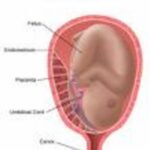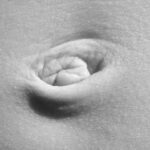Hearing your doctor tell you that something is wrong when you are pregnant is scary, but when you hear words that you don’t understand, like “placenta previa”, the fear goes up a notch. To help ease your worries, this article will explain exactly what the condition is and how it can be treated.
Placenta previa is basically when the placenta is too close or even covering your cervix. The placenta is the vital organ that bridges the gap between mother and child and supplies nutrients through the baby’s umbilical cord. You might hear that the placenta can actually move, but in reality it is rooted in place. However, the uterus is constantly changing and growing with your unborn child, so the position of the placenta can change throughout the pregnancy.
Early on in the pregnancy, placenta previa is not a big deal, since it is quite likely that things will change by the time you are nine months pregnant. However, a late pregnancy diagnosis could mean trouble. The position of the placenta is checked by ultrasound, which is why it is important to make those monthly doctor’s appointments.
This condition can cause bleeding in the third trimester and might even cause an early labor, resulting in a premature baby. If the placenta is covering or partially covering the cervix when you go into labor, it will be impossible to deliver vaginally and you will be sent for a C-section. While this is not an ideal turn of events, it means that both you and your baby can be kept safe.
Even if your 19 week ultrasound shows a low-lying placenta, only 10% of women go on to have complications at the end of their pregnancy. That means you have a 90% chance of the placenta shifting position, due to the expansion of the uterus, and making a regular delivery possible.
The treatment for placenta previa is very simple. You will be carefully monitored with frequent ultrasounds to see where the placenta is and told to rest. Sex and internal exams will most likely be banned for the remainder of the pregnancy and you might be required to take it easy, leaving dishwashing and laundry to your partner. In extreme cases, where bleeding is a factor, bed rest might be needed.
Bleeding from placenta previa is caused by the natural changes in the cervix at the end of a pregnancy. As the cervix changes shape or begins to dilate, the blood vessels rooted there will be dislodged and this will cause bleeding, sometimes a lot of bleeding. It is important to let your doctor know if this is happening to you. The good news is that this rarely happens until the woman is nearly full-term, so it should be perfectly safe for the baby to be born via Cesarean.
There is a chance that the woman will suffer from excessive bleeding after the delivery as well, due to the placenta previa, but this situation can be fixed by doctors. It is an expected possibility, so they will be ready to handle it.
Women who are at risk include those who have a history of placenta previa, those who smoke or use cocaine, and women carrying multiples. You are also at higher risk if you have had surgery on your uterus in the past, including a c-section. It is a good idea to let your doctor know if you have a risk factor in your past so he can watch for potential problems.
Placenta previa is a complication in pregnancy, but as far as complications go, it is not as serious as many. The treatment is minor and in nearly every case, both mother and baby are able to get through the delivery easily enough, albeit through a c-section.



